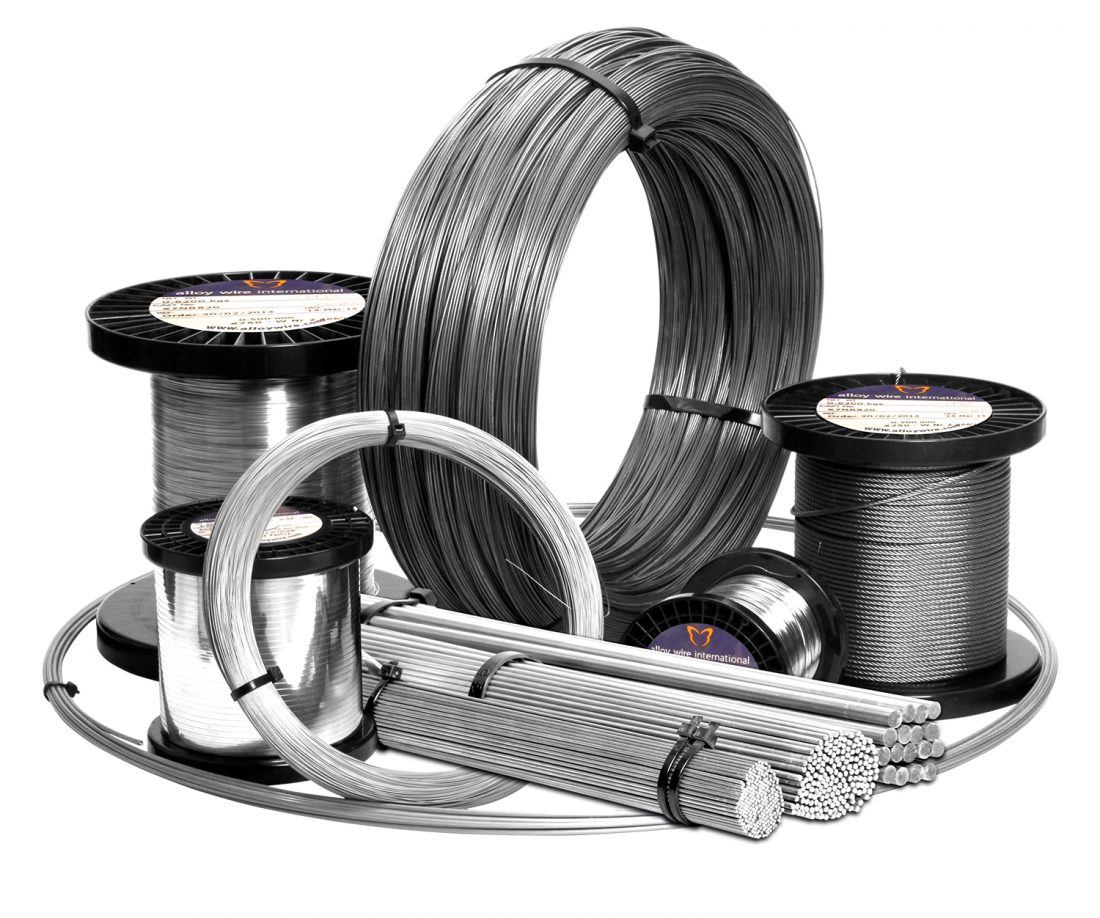
Alloy Wire International
Datenblatt: Nickel® 205
Nickel® 205
Nickel® 205 ähnelt Nickel® 200, verfügt jedoch über Zusammensetzungsanpassungen, um seine Leistung in elektrischen und elektronischen Anwendungen zu verbessern.
Nickel® 205 ist auch bekannt als VDM Nickel 99,6.
Erhältlich in allen Profiloptionen

Haupteigenschaften
Nickel® 205 offers the following key features:
Ähnlich wie Nickel 200, aber mit angepasster Zusammensetzung, um seine Leistung in elektrischen und elektronischen Anwendungen zu verbessern.
Typische Anwendungen
Nickel® 205 is known to be suitable for the following applications:
Anoden und Gitter von elektronischen Ventilen
Leitungsdrähte
Transistorgehäuse
Magnetostriktive Wandler
Bezeichnungen
Wkst. Nr. 2.4061
UNS N02205
AWS 072
Spezifikationen
–
Chemische Zusammensetzung
The chemical composition of Nickel® 205 is indicated in the table below:
| Element | Min % | Max % |
|---|---|---|
| Ni | 99.0 | – |
| Mg | 0.01 | 0.08 |
| Ti | 0.01 | 0.05 |
| Cu | – | 0.15 |
| Fe | – | 0.20 |
| C | – | 0.15 |
| Si | – | 0.15 |
| S | – | 0.008 |
| Mn | – | 0.35 |


Legierungsdetails
Nickel® 205 density, melting point, coefficient of expansion, modulus of rigidity, and elasticity is indicated in the table below:
| Dichte | Schmelzpunkt | Ausdehnungskoeffizient | Steifigkeitsmodul | Elastizitätsmodul |
|---|---|---|---|---|
| 8,89 g/cm³ | 1446 °C | 13,3 μm/m °C (20 – 100 °C) | 82 kN/mm² | 207 kN/mm² |
| 0,321 lb/in³ | 2635 °F | 7,4 x 10-6 in/in °F (70 – 212 °F) | 11893 ksi | 30000 ksi |
Nickel® 205 electrical resistivity is indicated in the table below:
| Elektrischer Widerstand | |
|---|---|
| 9,5 μΩ • cm | 57 ohm • circ mil/ft |
Nickel® 205 thermal conductivity is indicated in the table below:
| Wärmeleitfähigkeit | |
|---|---|
| 75 W/m • °C | 520 btu • in/ft2 • h • °F |
Eigenschaften
The typical mechanical properties of Nickel® 205:
| Zustand | Ungefähre Zugfestigkeit | Ungefähre Betriebstemperatur |
|---|---|---|
| Glühen | <500 N/mm² (<73 ksi) | Zugfestigkeit und Dehnung nehmen bei Temperaturen über 315 °C (600 °F) deutlich ab. Die Betriebstemperatur hängt von der Umgebung, der Belastung und dem Größenbereich ab. |
| Hartgezogen | 700 – 900 N/mm² (102 – 131 ksi) | Zugfestigkeit und Dehnung nehmen bei Temperaturen über 315 °C (600 °F) deutlich ab. Die Betriebstemperatur hängt von der Umgebung, der Belastung und dem Größenbereich ab. |
Die obigen Zugfestigkeitsbereiche sind typisch. Wenn Sie andere benötigen, fragen Sie bitte.
*Handelsname der Special Metals Group of Companies Conductive

